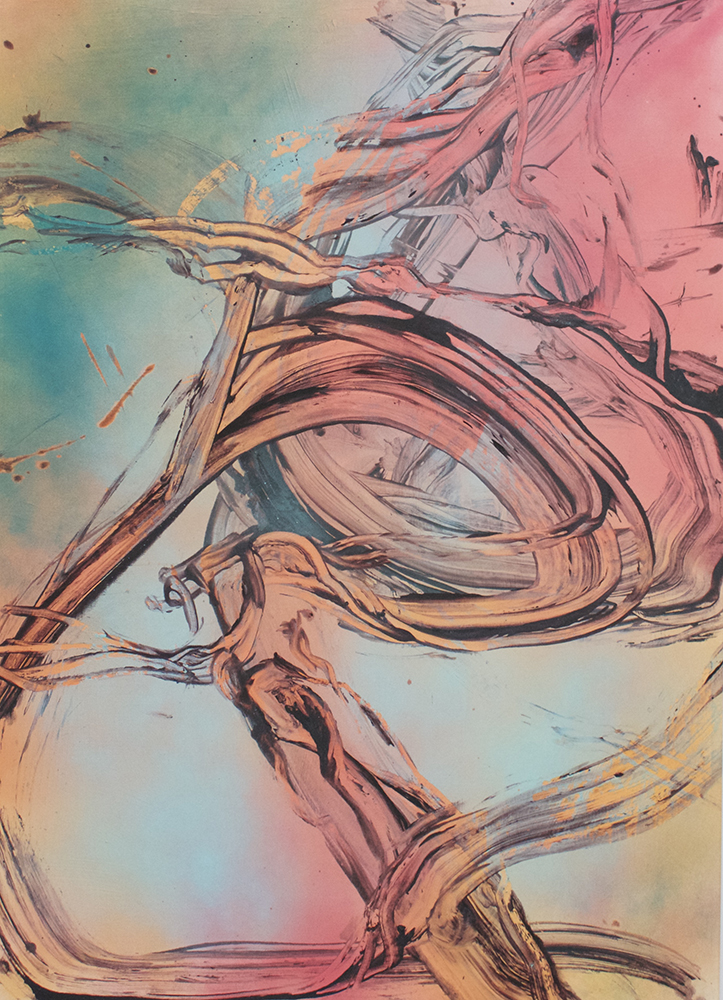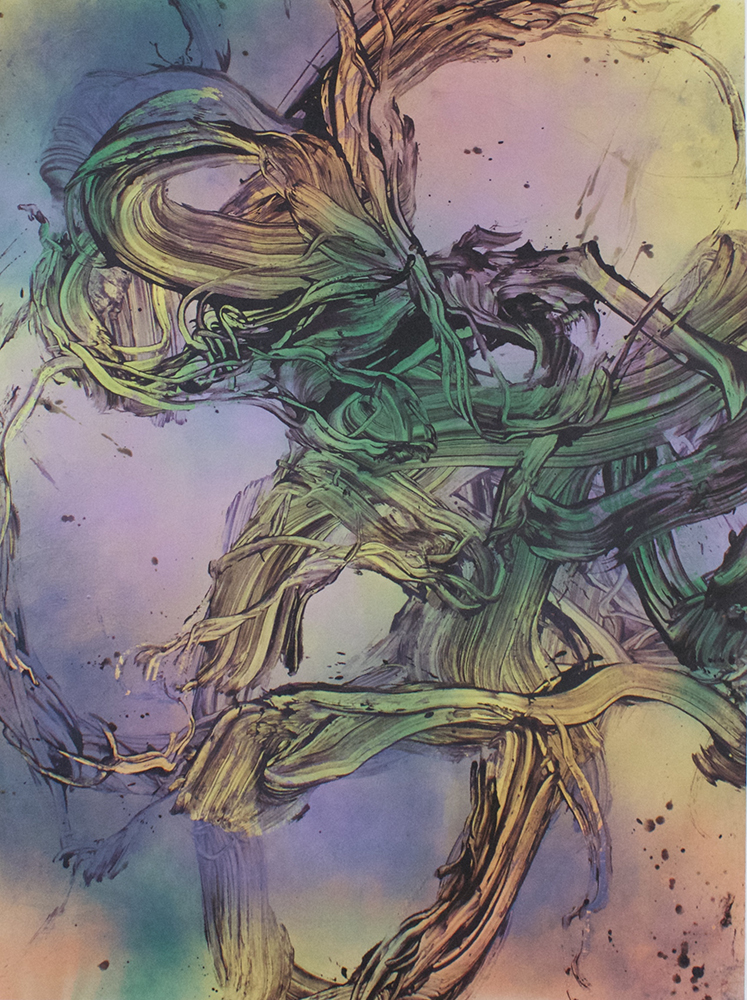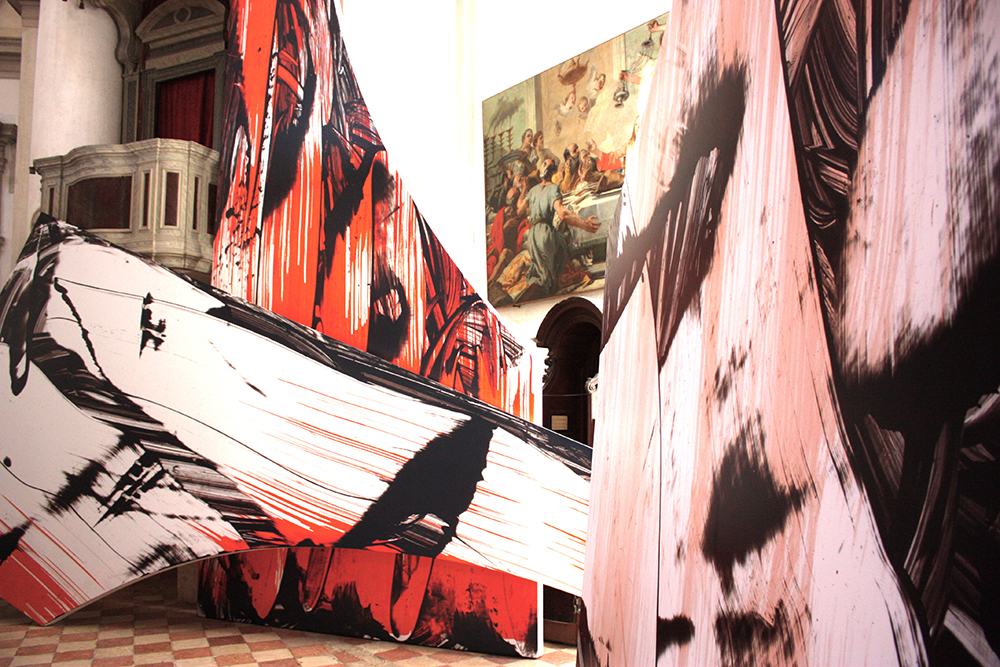
Cloud rider 2018 140x100cm acrylic and oil on canvas
Having just had the Guardian list her latest UK show at Fold Gallery as one of the top five in London, Judy Millar is undoubtedly one of New Zealand’s most successful international painters. Her work is part of Australasia’s compendium of contemporary painters and is scattered throughout museums, galleries and private collections worldwide.
Her painting style is unfettered and expressive to say the least, so I was surprised to turn up to a relatively paint-free studio space, that looked more like a packing factory than the inside of a mixing bowl, which I had expected.
Floor-to-ceiling shelves of wrapped and numbered artworks, rolls and rolls of packing materials (including recyclable bubble wrap, I am happy to report), shipping crates in varying sizes, with wheels, without wheels, painted white, unpainted, tools, so many tools. Tape, saws, craft knives, trestle tables, whiteboards, and lists.
The only studioesque smattering of paint in the expansive warehouse space was long dried on the floor. That’s not to say there was an absence of paint. The walls were populated with her works each containing giant dramatic motions of paint and colour, entwining themselves upon the surface, telling their stories of space and time, their concentrated crescendos of pure colour reaching out for your soul, drawing you into their lucid dance.

Untitled 2018 210x155cm acrylic and oil on canvas
I digress.
The walls were also populated with well-ordered printed photographs of tiny model rooms made from foamboard, within which mini-works were marked up with their location. Judy is in the midst of organising artwork required for a five-room-filling survey exhibition of her work, planned for Kunstmuseum St Gallen in Switzerland early next year. Amongst other things this entails contacting collectors, museums and public galleries to loan works needed for the show.
What is the biggest pitfall with maintaining an international art career?
”Never having as much time as I would like to paint. A huge amount of time is needed to track and plan exhibitions. It’s difficult to turn down opportunities to show the work, I feel an obligation to the work itself to get it out into the world. But being alone in the studio painting is where I truly feel excitement, disappointment and everything in between. That’s where my real life is, so minutes away from my painting studio, although important, are always pressed.”
Judy has two Auckland studios, one where she paints with wild abandon (I Imagine) and the other, where I am today, where the works that ‘make the grade’ end up to be photographed, catalogued and stored or distributed.
What is the ratio of works kept and works destroyed?
”I don’t really keep track of that, but probably about 10% of works that I begin end up being exhibited. Some never get finished, some are finished but never leave the studio, some get edited out once I’ve had them hanging around for a while.“

Judy Millar, Giraffe Bottle Gun, 2009, La Biennale di Venezia, Venice Italy
How do you keep your painting process pure, when under pressure to produce X amount of works for exhibitions and surveys?
“I simply refuse pressure. I paint all the time and only offer work for an exhibition when I have a group of finished canvasses that make some sense when they are hung together. Every day it’s necessary to reassess where your work is at and where it’s going, so you have to keep any expectation of a ‘result’ out of the thinking.”
Judy Millar represented New Zealand at the Venice Bienniale in 2009. Her paintings are held in all major public collections in New Zealand and Australia and in several international collections including the Kunstmuseum St Gallen and Tichy Foundation in Prague. Her current solo exhibition is at Fold, in London until 20 October 2018.
Words: Aimée Ralfini
Artworks: Judy Millar Courtesy of the Artist
judymillar.com






